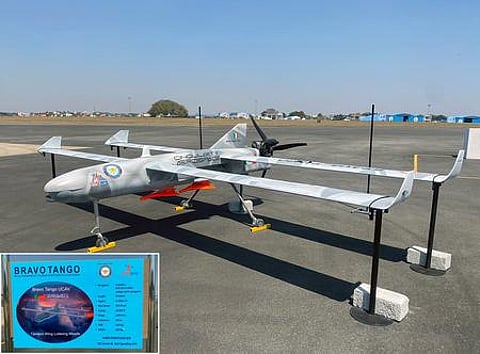

CHENNAI: The country’s first-ever testing centre for Unmanned Aerial Vehicle (UAV) under the Defence Testing Infrastructure Scheme (DTIS) will be established on five acres of land at Vallam Vadagal in Kancheepuram district.
The Rs 50 crore facility was granted approval by the Ministry of Defence after a bid was submitted by Keltron-led consortium in collaboration with Tamil Nadu Industrial Development Corporation (TIDCO). The establishment of the UAV testing centre in Tamil Nadu Defence Industrial Corridor marks a historic milestone for the state and the entire nation, said official sources.
“The UAV testing centre stands as a testament to India’s commitment to fostering cutting-edge technologies. It will serve as a beacon of progress, attracting investments, spurring job opportunities, and elevating India’s status as a hub for drone technology research and development,” the official source said.
The establishment of UAV testing centre comes at a time when the drone industry is witnessing unprecedented growth. With a projected annual growth rate of 22% and an estimated market value of Rs 28,000 crore by 2025, drones have become crucial tools in various fields.
It is learnt that Tamil Nadu Industrial Development Corporation (TIDCO), as the government agency part of the UAV Testing Centre, has played a crucial role in supporting and facilitating the realisation of this transformative project. With a consortium led by Keltron, and supported by expert partners SenseImage, STIC, and Avishka Retailers, the Centre is poised to foster indigenous innovation and research in the drone sector.
The integrated testing complex at Vallam Vadagal also targets electromagnetic compatibility or electromagnetic interference (EMI/EMC) testing apart from electronics optics, electronic warfare and RF antenna.This testing is a critical step in the design and manufacturing processes of electronic devices. With the presence of many electronics manufacturing and design-focused industries, sources said Tamil Nadu has huge potential for the EMI/EMC and communication testing labs.
The DTIS, initiated by the Ministry of Defence, aims to bolster indigenous capabilities and self-reliance in the defence sector. The approval to establish the UAV Testing Centre showcases the government’s commitment to supporting domestic research, development, and manufacturing of drones, thus reducing dependence on foreign testing facilities and bolstering India’s position as a global player in UAV technology, added sources.
Drones in the military
Nowadays, UAVs are used in a wide range of military operations
Target acquisition
The UAVs can be used to locate and track enemy targets, which can then be targeted by armymen. It can also assess the damage caused and provide valuable information to military planners.
Intelligence gathering
Equipped with high-resolution cameras and sensors, the data and images collected by drones can be used to identify enemy positions, assess the terrain, and track movements
Precision strikes
The precision-guided munitions in drones can be used to target enemy positions with great accuracy
Force protection
Drones can be used to monitor friendly positions and alert troops to potential threats. They can also be used to escort convoys, providing valuable situational awareness and reducing the risk of ambushes
Surveillance and reconnaissance
They can be used to monitor enemy positions, track troop movements, and assess the terrain. The information collected can be used to develop strategies and tactics
Search and rescue
UAVs can be used to locate and rescue personnel in inaccessible areas. They can also be used to drop supplies to troops in the field
Combat operations
UAVs can be used to provide air support to ground troops, targeting enemy positions with precision-guided munitions. They can also be used to patrol borders and conduct reconnaissance missions
Anti-Drone Operations
Drones can be used to detect and neutralise enemy drones, reducing the risk of aerial attacks
Training and simulation
They can be used to simulate enemy positions and scenarios, allowing troops to practice tactics and strategies in a safe environment
Logistics & supply
Drones can be used to transport supplies, equipment, and personnel to remote locations. They can also be used to resupply troops in the field, reducing the need for ground convoys